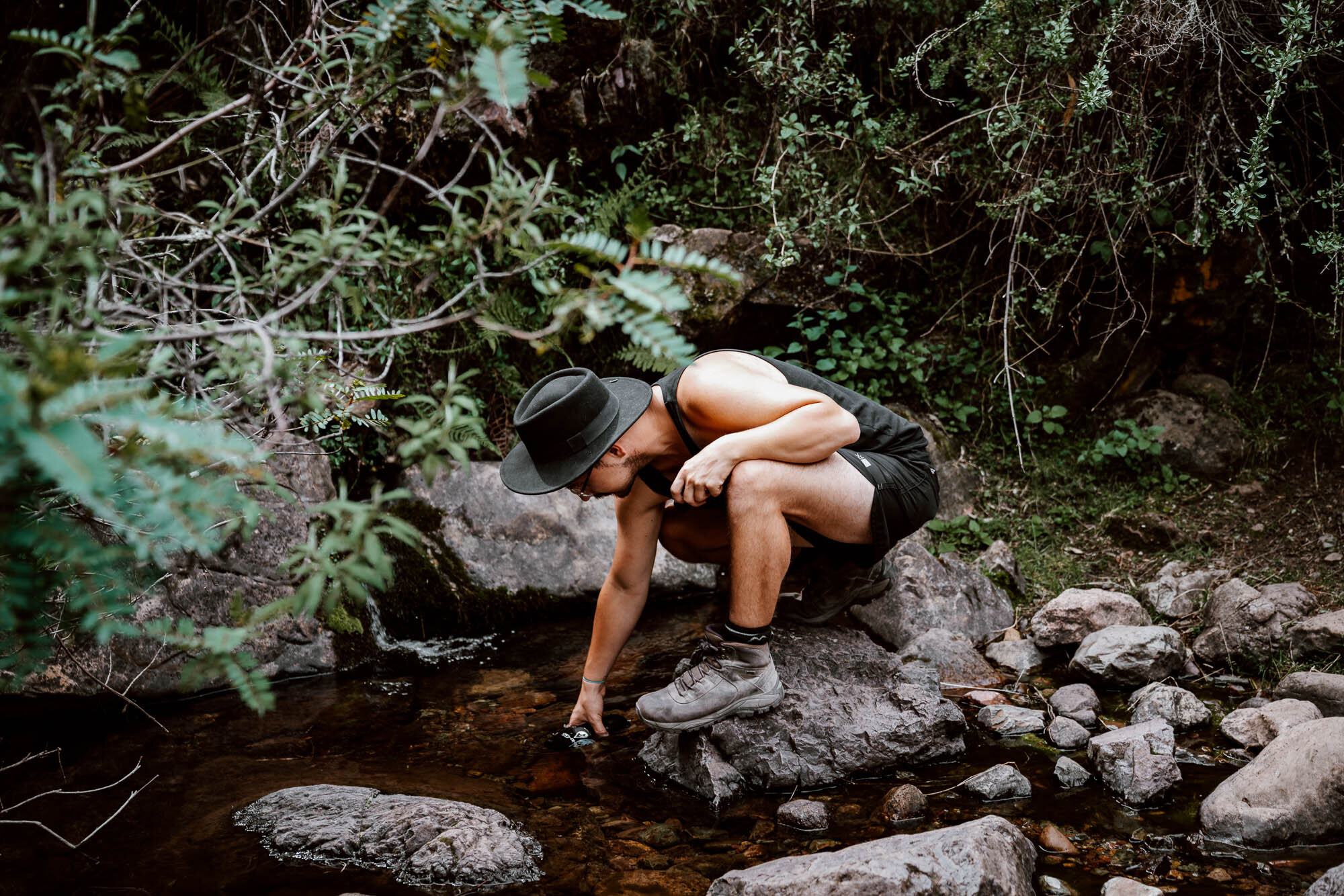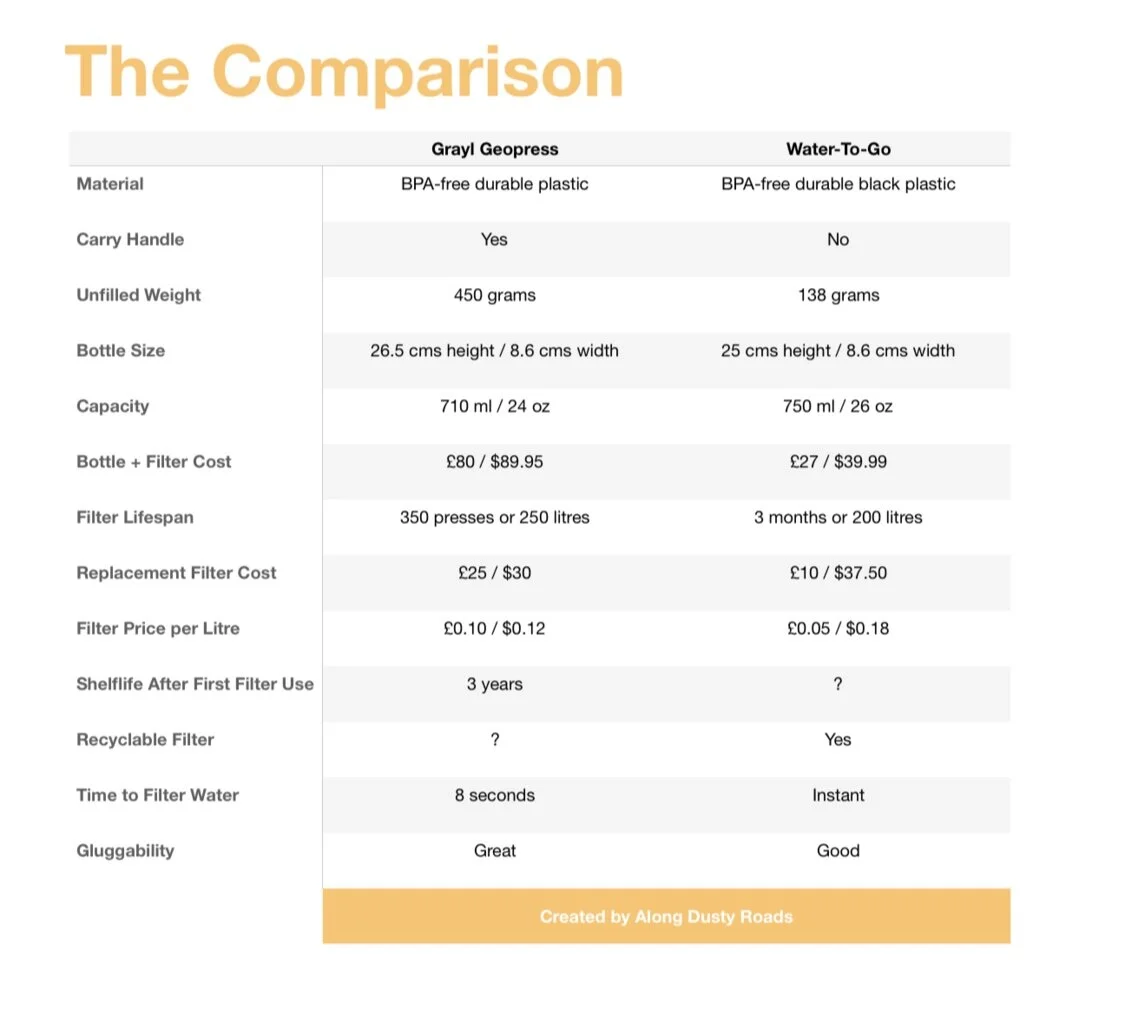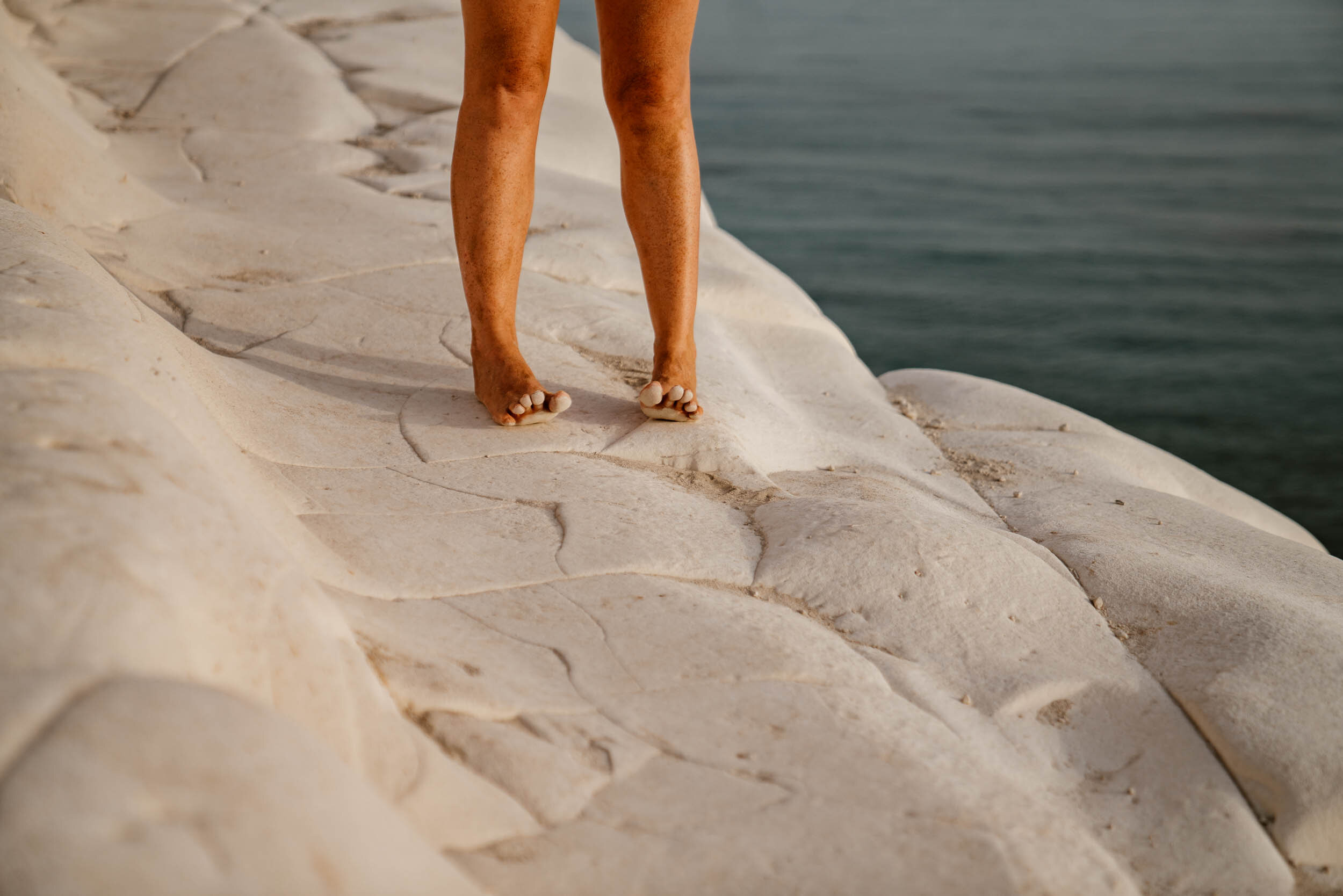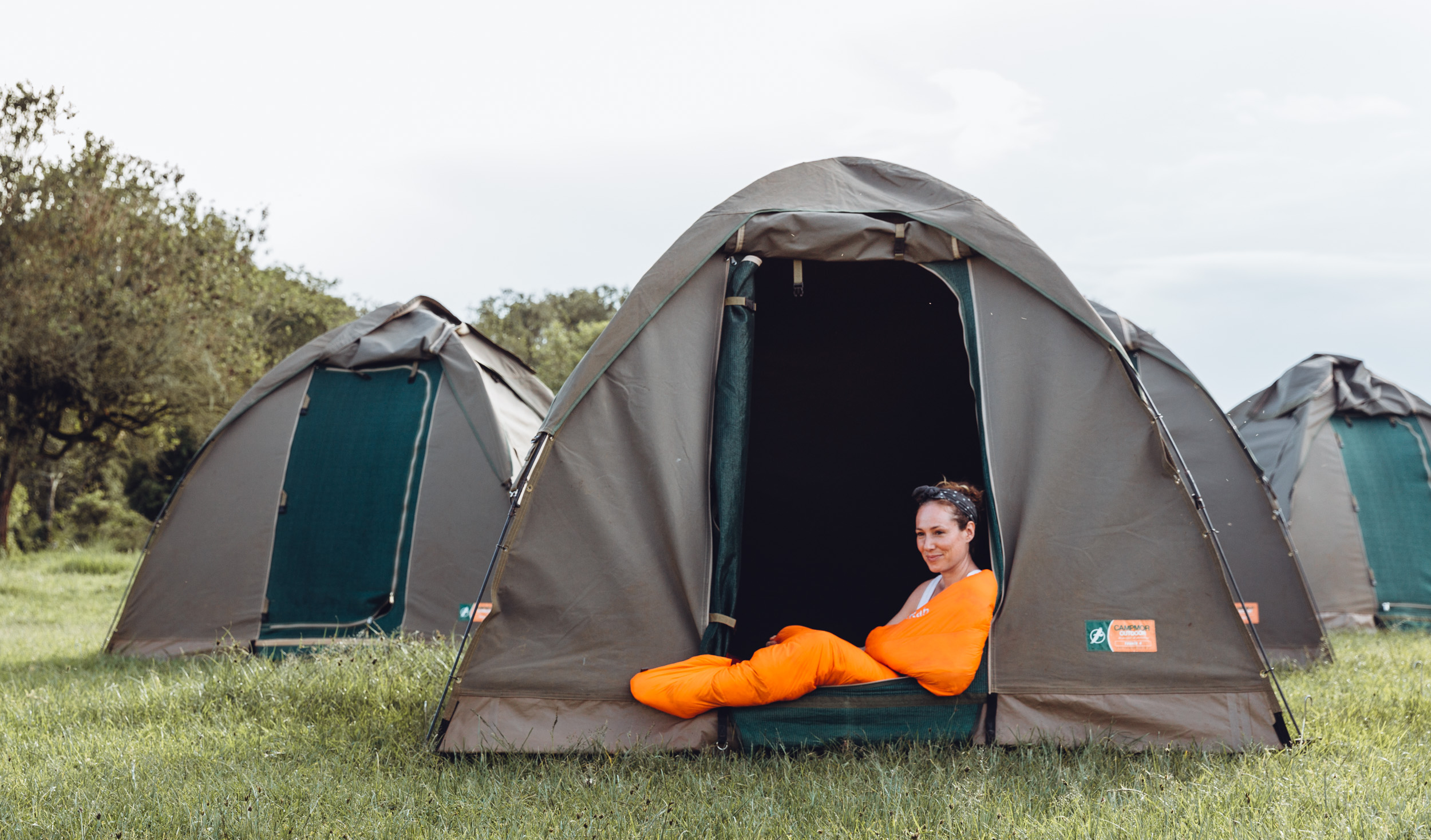Looking to understand how travel water bottle filters work? Trying to find the best water filter bottle for your upcoming adventure? Or simply confused from all the options you found on Amazon?
Our personal guide based on our own experiences has got you covered.
For the last two years of our travels across Africa, South America, and Asia, we have each carried a piece of travel kit which performs minor miracles.
It has given us instant access to safe, clean, purified drinking water everywhere, cut our single-use plastic bottle waste to practically zero, AND saved us a lot of money.
It fits snugly into the side of our backpacks, doesn't require any complicated process to use, clean, or carry, and it has never made us ill.
Not once.
It would almost seem too good to be true.
But it isn't.
For the last two years we have simply used two affordable travel water filter bottles. It has made us much more responsible travellers and reduced the negative impact our travels can have on a destination and its environment - we genuinely believe that it is the best travel product created in the last decade.
As you're reading this post, chances are that you're already contemplating whether to add a water bottle with filter to your own essential travel kit.
So, first up, we just want to applaud your decision - whether you're doing it for sustainability, convenience, practicality, or money-saving - it's brilliant that you are looking at ways to become a more responsible traveller.
Secondly, we want tell you that this article is written by travellers (that's us, Andrew & Emily!) for travellers. We aren't trying to tell you what water bottle filter is best for the local gym, a hike in the UK or a European city break; instead, we will show you the filter bottles which are best for those who travel to far-flung places, who like adventure, who go hiking, backpacking, or exploring for weeks, months, or years at a time.
The only filter bottle brands we would confidently use in Central & South America, Africa, and Asia.
In this article, we will explain the the myriad benefits of travel filter water bottles, underline why everybody should have one, share our personal experiences of using them, alongside clear advice on which filter bottles should be avoided completely by travellers.
However, it's necessary to have a spoiler before we begin...
The Best Travel Filter Water Bottles
The truth is there are currently only four water filter bottles (by two companies) which will actually do the job of giving clean, safe drinking water to travellers everywhere.
These are the bottles which will remove 99.99999% of the bad stuff when you fill up from every available water source (except the ocean), the ones that you can rely on to remove all bacteria, viruses, parasites, chemicals, and microplastics.
Of those four, the best filtered water bottles for travel are the Water-to-Go 75cl and the Grayl GEOPRESS.
We've explained in more detail why these bottles are the only ones you should buy - and why the better known LifeStraw isn't fit for purpose - later in this post.
However, if you don't need the details and just want to make a quick decision on which one water bottle with a filter is best to buy for you and your travel style, just scroll down to the comprehensive Travel Filter Water Bottle Comparison section near the bottom of this post.
If it helps, we’ve used the Water-to-Go 75cl for the last three years.
Why Travel Filter Water Bottles Are Brilliant
We are so passionate about raising awareness amongst the travel community about these bottles. If we had our way, every single traveller should have one, and it disappoints us that we see so few of them in people's hands or backpacks when we're on the road.
The main reason is probably because the technology improvements are relatively recent, and most people simply aren't yet aware of them.
Indeed, many people we've spoken to still think that the only way to purify or filter your water when you travel is by boiling it, using purification tablets, an impractical SteriPen, or a bulky filtration kit made for hardy explorers.
When we backpacked through Latin America for two years in 2014-2016, we depended on purification tablets as a back-up but soon just took the easier option of buying lots and lots of bottled water.
There simply wasn't a better practical alternative.
Now there is - and they’re all incredibly easy to use.
Further, since there are so many other areas of trip preparation to worry about or get sorted before you fly on a big trip, working out how to access safe drinking water beyond the plastic bottles sold in supermarkets and shops may not be a priority.
And we totally understand that.
However after our own experiences in the last two years, it's now clear to us that everybody - whether you're backpacking, young, old, experienced or a first-timer, on a tour, on a budget or happy to splash the cash - will benefit from having a travel filter water bottle.
It will empower you to travel better, and here's why:
Access Safe Drinking Water Everywhere
With the best filter bottles, you can fill up from just about every water source (except the sea) and you will instantly get free, clean, safe drinking water.
We've filled our own bottles up from rivers, lakes and waterfalls in Colombia, bathroom taps in Tanzania, railways station bathrooms in India, and a whole lot in between.
Yep, it's a minor miracle right?
Simply unscrew the top, fill it up, put the lid back on and let the filter do its work as you start glugging. We have not had one single negative or bad experience from doing this, and no illness either.
Relying on single-use bottled water when you travel really is a thing of the past.
Note that none of the travel filter water bottles listed above or elsewhere in this post will be able to filter sea or ocean water; no travel water purification bottle can do that.
Save A Lot of Money
Between late 2018 and early 2020 we were fortunate enough to spend four months travelling in South America, three weeks in India, and a month in Cambodia - let's call it 170 days in total. Aside from a few cities in Colombia and Ecuador, none of the places we visited had safe, reliable drinking water available from taps.
The average cost of a one litre bottle of water across those countries was $0.50 - $1.00 - for the purposes of this post however we've taken the lower end cost of 50 cents so that you don’t think we’re trying to overstate the available savings.
So, on the assumption that we would each consume 2 litres of water per day as a minimum when travelling, the costs of staying hydrated on those trips would have been $170 USD each.
1. 170 days x 2 litres per day = 340 litres
2. 340 litres x $0.50 per litre = $170 USD
That figure is conservative, as we would have drunk more water overall and the actual average price is closer to $1. So, you can safely bump that expenditure on water to over $200 USD. However, we'll stick with £135 / $170 USD for this cost comparison.
In contrast, the cost of one of our bottles, plus two replacement filters, was £48 / $60.
So, by using our water bottles instead of buying single-use plastic bottles of water, the overall saving across those trips was at least £87 / $110 each.
Using filter bottles is guaranteed to save money for anyone on a long-term trip (and gives you more money to spend on fun stuff, like beer or tacos), and if you are only travelling for a month or less, you will still save overall or at least break even.
Reduce Plastic Waste
At home and overseas, we should all be trying to limit our plastic consumption.
After a lot of media attention in the last couple of years, the message is thankfully now more mainstream, but it is worth sharing some key statistics:
91% of plastic isn't recycled | source
A million plastic bottles are bought around the world every minute and the number will jump another 20% by 2021 | source
If it does get recycled, plastic can only be reused or recycled meaningfully two to three times MAX | source
Plastic takes more than 400 years to degrade, so most of it still exists in some form | source
One person dies every 30 seconds in developing countries from diseases caused by plastic pollution and rubbish | source
A truckload of plastic enters the ocean every single minute | source
50% of plastic produced every year is for single-use only | source
Depressing reading, right?
As responsible travellers, none of us should be contributing unnecessarily to this wasteful and unsustainable habit. But, over the course of a few weeks or months on the road in destinations where bottled water is the only reliable source of safe drinking water, your personal plastic footprint quickly mounts up.
This is where we screwed up on our own two-year backpacking trip through Latin America in 2014-16, and we still feel guilty about how much single-use plastic waste we mindlessly caused and consumed on that trip in order to stay hydrated. Travellers create a lot of the plastic waste in developing countries due to our need to constantly consume plastic water bottles, and these countries often do not have the infrastructure to manage or process the waste it produces.
Thankfully, by travelling with your own refillable water bottle, your consumption of single-use plastic bottles will be cut down dramatically. You won't have to buy water for that bus ride, you won't have to buy three bottles for that multi-day hike, you won't have to buy one for that hungover morning in the hostel, you won't have to buy one at the airport.
Recycling single-use plastic isn't the answer, it's about using as little of it as possible.
It may seem a like a drop in the ocean, but it at least stops us from using more stuff that ends up dropped in the ocean.
Read more fast facts about plastic pollution here, or find out other ways to travel with less plastic.
Increase Hydration Confidence
Certain people are very worried about drinking from the tap when abroad - hello, Emily's mum, dad and sister), and insist on buying a several large bottles of water to drink from every day, everywhere. Even in an Airbnb in Italy or Portugal.
Other people - hello, Emily - are much less concerned.
The fact of the matter is that experiencing a bit of a dodgy stomach whilst in a new country or city where the water is potable (that is, safe to drink, straight from the tap) is not unusual. Different methods of sterilisation and sanitation can mean different mineral levels in the water; for sensitive tummies this can take a little while to get used to.
With your own filter bottle, you can fill up from every tap with confidence that its filtering technology will strip out these various minerals.
Or you could just get used to it, as Emily screams at her parents every damn year!
Increase Smug Factor (And Raise Awareness)
Not gonna lie to you, we love people looking at us with shock and concern when they see us filling up from a tap or a river. And we love being able to let them know why it's completely safe to do because we've got our filters. And then we love that it lets us get into a conversation about why we use them and how they've helped us to save money and cut down on plastic.
Nine out of ten times, that conversation leads to our fellow traveller making a note of the bottles we use for their next trip.
The more travellers use and carry filter bottles, the more that other travellers will find out about them.
And all the benefits noted above will become more widespread.
We would be so so happy if the number of travellers and tourists using these bottles transformed from 1-2% to 10-20% in the next few years - but that won't happen without enough of us making the change.
But Not All Filter Water Bottles Are Suitable For Travel
The biggest mistake someone can make when buying a new filtered water bottle, is failing to realise that many popular products on the market are not made for travellers.
They will not filter out waterborne viruses, parasites, chemicals, diseases, or bacteria, and they will not make unsafe drinking water safe.
Instead, they will give you the shits.
Or worse.
Much of the marketing material of bottle brands hides this, opting to only tell you what their filter DOES rather than what it DOESN'T DO.
And this is dangerously misleading when it comes to a product which can have a direct impact upon a traveller's health.
This isn't the place for us to go into deep-dive dull detail on the the various types of filters, the merits of purifiers, reverse osmosis vs. UV light, or the scientific and technical detail about why they do what they do. However, all you really need to know is that water filters and water purification systems DO NOT all do the same thing or serve the same purpose.
Indeed, if you type 'filtered water bottles' into Google or Amazon, you will find a lot of popular bottles and brands pulled up in the search results.
There's the Brita sport water one, the Bobble one (which Andrew used a lot in London), and a cornucopia of cheaper copy-cats (see all here).
These reusable and refillable bottles are only suitable for using with water which is ALREADY SAFE TO DRINK. Their filters only improve the water by removing bad tastes or smells from it (usually chlorine) and some contaminants.
They're therefore great for having on a European city break, at home, or in the office to make the tap water taste a little better, but they will NOT stop you getting the shits if you fill up from the Ganges.
So do not buy one of them for your next adventure.
· · ·
The next level up are the LifeStraw Go 2-Stage and the WaterWell.
The former is really well-known amongst the travel community and was actually a pioneering product, whilst the latter is a more recent addition using similar aesthetics and filter tech.
Due to this, they are specifically marketed at travellers as one of the best travel water bottles with a filter. On the face of it, they would also do a lot of what one expects a filter bottle to do:
Removes 9.999% of bacteria and parasites (including Cryptosporidium)
Removes microplastics
Reduces chlorine levels
Improves water taste
Protects against pesticides and herbicides.
Indeed, their marketing is very clear on all the things they filter out and protect travellers against...but you have to do a bit more digging to find out what they are leaving in your water.
Both LifeStraw and WaterWell do not filter out waterborne viruses.
What's a waterborne virus we here you ask?
Simply put, it’s a virus that is transmitted via consumption of contaminated water. According to the World Health Organisation (WHO), water-transmitted viruses that are classified as having a moderate to high health significance include adenovirus, astrovirus, hepatitis A and E viruses, rotavirus, norovirus and other caliciviruses, and enteroviruses, including coxsackieviruses and polioviruses.
These viruses are found across many developing countries, and prevalent in the regions of the world that us travellers love most (Asia, South America, Central America, and Africa). Emily used to be a doctor, and knows first-hand the impact these can have on people.
They are not fun.
There is science behind why these specific brands do not protect against these viruses, but it essentially comes down to their filter pores being too large, and thereby not filtering out this microscopic stuff.
And that's why we have never bought or used a LifeStraw.
They may be a a good travel water filter bottle in general, but they would not give us confidence in many parts of the world.
We wouldn't have used it in India, we wouldn't have used it in Cambodia, and we wouldn't have used it in South America.
The chance of falling ill would have been too high.
Note that there are a bunch of copycat products of LifeStraw on Amazon, so if you opt for this type of travel water bottle, it's best to get the proper version from an established brand rather than a cheap one.
Best Travel Filter Water Bottle Comparison
And then there were two...
(although technically, there are four…)
To make this post as comprehensive and useful for you, we have done a lot of research in addition to just talking about our own bottles and our own experiences. We are experienced travellers, and experienced in travelling with our own travel filter water bottles, and we felt it was so important to share the realities beyond the marketing. We also know some friends use different products to us.
Therefore, we think there are only two brands which offer bottles suitable for travellers going to disparate developing nations, who like to hike, who like to explore cities, and who want to have confidence that their filter is doing its job right, everywhere.
The four water purifier bottles offered by both Water-to-Go and Grayl are excellent, and get the job done.
They improve the taste, smell, and appearance of the filtered water. They remove bacteria. They remove micro-plastics, chemicals, and reduce chlorine levels. Their plastic is BPA free. They remove parasites and heavy metals. They have the filtration system permanently within the bottle, so you don't need to worry about a complicated process or carrying additional kit. With their technology, they go beyond simply filtering your water to purifying it by removing 99.99999% of bad stuff.
Crucially, their filters remove waterborne viruses.
Simply find your water source, fill up, and you're pretty much good to drink straight away - with total confidence.
In their respective ranges, they offer two bottles each:
The Water-to-Go 75cl + The Water-to-Go 50cl
The Grayl GEOPRESS water bottle + The Grayl ULTRALIGHT water purifier
Based on our experiences, our discussions, and our research, we are happy to recommend any of these four bottles to travellers. However, we think the two best buys for backpacking adventures would be one of the larger bottles i.e. the 75cl and the GEOPRESS.
Having the larger volume water container, whilst remaining practical, is really important on hikes and to maximise each and every fill-up. The GEOPRESS also filters in half the time of the cheaper, smaller, and older ULTRALIGHT.
Before buying your own, it's really important to understand the key differences between the Water-To-Go and Grayl on price, performance, durability, and lifespan cost. In the comparison below, we've shared the key details to help you decide:
We know a few people who use the Grayl, and have only positive things to say about the experience (both with the Ultralight and the newer GEOPRESS).
This isn't at all surprising, and its design is also really cool and eye-catching.
However, we can’t help but feel that the price-point for the initial bottle plus filter is too high to make it a mass purchase product for lots of travellers. It also means those savings we talked about earlier would take a lot longer to be realised when compared to the lower up-front and ongoing cost of the Water-to-Go.
In terms of the filling-up process, the Grayl’s fill-up and press process, though it only takes 8 seconds to purify the water, requires more effort and time then the Water-to-Go’s easy unscrew lid, fill bottle, rescrew lid, drink method.
As mentioned, we have used our Water-to-Go 75 cl bottles for the last three years. As we note in our specific product review, the design had three key flaws:
1. It isn't as pretty as the Grayl.
2. Some water would leak out from under the lid if the bottle was left on its side.
3. The flow of water when sucking was annoyingly slow
The first issue was simply on aesthetics; the second proved to be a real pain. It's normal user behaviour to leave a bottle on its side on your bed or in the bottom of a bag. Thankfully none of our cameras were affected or anything serious, but it was a pain on that South America trip.
Although we recommended it to everyone we met due to the other benefits, we couldn't give it a whole-hearted endorsement.
We let Water-to-Go, who are a small British company, know about the leak and the 'suckability' issue , and they thankfully took it on board from us and other travellers. At the end of 2019 they changed the design of the lid fundamentally, and we brought these with us for our month in Cambodia.
We're happy to share that the new design significantly improved the 'suckability' and completely solved the previous leak issues - read our full, unbiased review of the bottles here.
Therefore, due to fixes, our own experiences, the up-front and ongoing cost savings, the the weight differences between them, our recommendation for best travel filter water bottle is the Water-to-Go 75cl.
However, we'd honestly be delighted for you to add either of them to your travel kit. For US readers, it may actually work out cheaper to buy the Grayl as the Water-to-Go is more expensive to buy and source replacement filters in the US.
Lastly, if you're heading off on a trip for 2+ months, make sure you pack one or two spare filters with you so that you can keep on using either bottle for the full duration of your trip!
Where To Buy Your Own Travel Filter Water Bottle
If you purchase your travel bottle directly via the links below, we may make a small commission on the sale. It doesn’t change the price for you, and it hasn’t affected our recommendations above, but it does help to keep Along Dusty Roads alive. So, if you’re going to get your bottle online anyway, then we’d very much appreciate if you order it via our links!
The Grayl GEOPRESS | buy on Amazon here
The Grayl ULTRALIGHT| buy on Amazon here
The Water-to-Go 75cl | buy on Amazon here
The Water-to-Go 50cl | buy on Amazon here
Although it’s usually cheaper to buy the Water-to-Go via Amazon, it’s worth noting that the bottles available there are often old stock which have the previous leaky lid. Therefore, it’s also worth looking into buying your bottle and filters directly from the company’s website.
Visit their website here, or go straight to the 75cl bottle page here.
If you do purchase directly from their website, you can also use an exclusive discount we negotiated for our readers to get 15% off everything - just use ADR15 at the checkout.
· · ·
Hopefully we have helped you understand exactly why this type of bottle is essential for travellers, and given you enough information and insight from our experiences to make a decision on which is right for your own adventure.
If you do become aware of any filter bottles which come onto the market, and think they should be included within this post, then let us know.
Similarly, if you have any questions or concerns about how to use your travel filter bottle on the road, just ask in the comments - we'd be happy to help!


















